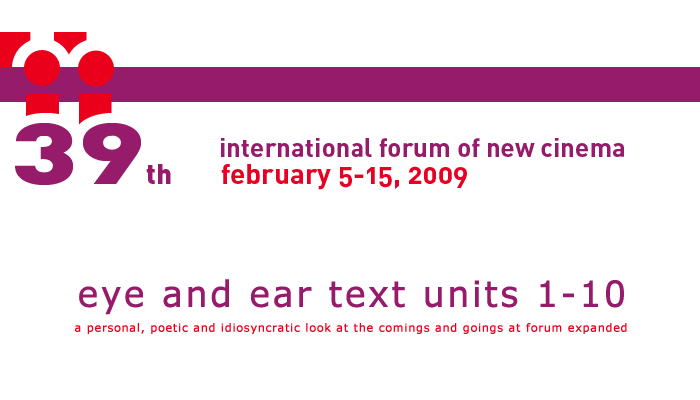Michael Snow mentioned at a screening at the Kunstweke tonight that the work he showed was a music video for unpopular music. The performance of the music that comprised the soundtrack and the recording of other performances that made up the images for the work shown raised several questions for me. A friend of mine once said regarding the sublime and difficult work of contemporary troubador Keiji Haino, "I can't help it if Haino is not popular music, ask who presents his work and how it is distributed why it is not popular". Seth Halloway was speaking specifically of a utopian possibility where the likes of Brittany Spears and Justin Timberlake would be distributed and presented equally to the public with the likes of Haino, Cage, and indeed, Snow, perhaps broadening our possibility of what would be popular music if more people had access to it.
I must backtrack a bit in order to mention my initiation into the wide world of cultural production ie; art, is from the point of view first and foremost as a fan, having cheated my way through primary school and never having made it to a university. I found art through popular culture. Warhol and Goddard through the Stones, Bunuel through punk rock, Snow and most of the 20th century's classical music by way of Kubrick. I was a serious fan and did my research. Another question; why do not more people have access to Michael Snow's group, CCMC?
Snow spoke of all moving images as ghosts, a thing I feel a complete kinship with him, instictually. He also made a point of describing specifically the difference between a music performance and a film and a film, something that for this fan and producer of sound and image means working with the raw materials to approaches an alchemical experiment in order to make a New Thing.
Another question; the New Thing. A phenomenon described in the mid 1960s applied to an emerging free jazz. I think of critic’s terms such as “sheets of sound”, “cascades”, or “sparks” to describe this then emerging form. It all falls shorts somehow, but still these terms kept me interested enough to always be eager to learn more about “difficult” works.
Soon after the New Thing, European improvisers abandoned rhythm in an attempt to free themselves of the tyranny of Time. It was exciting and yielded some great results. At one point during the screening at the Kunstwerke I remembered an old, black American phrase that Jazz and Blues were the Devil’s music. Then I thought of Jackson Pollack’s splatter paintings while I listened to Snow’s piano playing. I thought of Ghosts and that here I was watching three old white men conjure the devil with a fury. I watched and listened. What I saw were Ghosts.
I think if I had a piano for a year my life would be totally different somehow. As a way to sloppily end this missive I should mention Keiji Haino said in an interview once that the most inappropriate and oppressive instrument to be on stage with him would be a piano. On a live CD of his three piece improv band, Vajra, the three old Japanese men fucking ROCK. They get way out there, like Snow, only Japanese. Sparks, sheets and splatter, then they swing into an a capella traditional number that they end with a short piano solo. Like this, Michaels Snow’s band gets way out, and for the encore they swing, old fashioned style. I guess kindred spirits are everywhere like Ghosts.
Another question; how do they find each other and when will they be popular?
Michaels Snow also has a new work focusing on music as well. Puccini
Friday, February 6, 2009
Subscribe to:
Comments (Atom)


